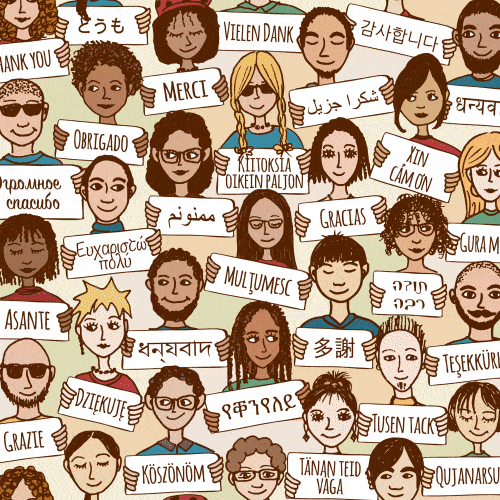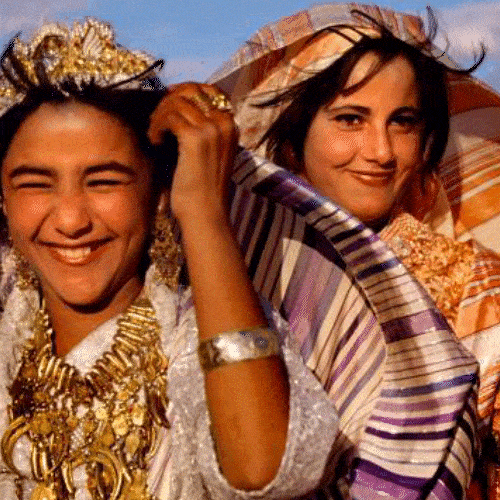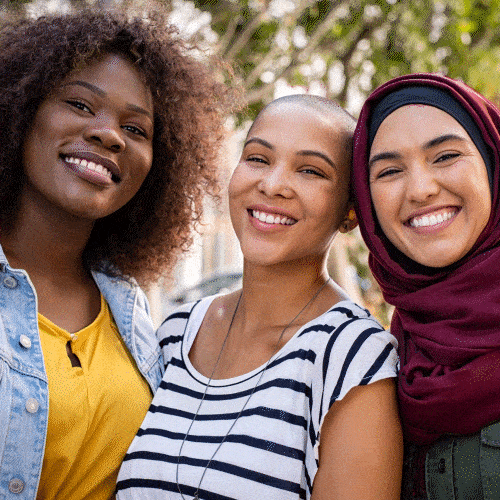The difference between "race" and "ethnicity" in the English language


Have you ever wondered about the distinction between the terms "race" and "ethnicity" in the context of multiculturalism and inclusion? Although many people use them interchangeably, they actually represent different concepts. We'll look into the difference between race and ethnicity, how we discuss them in English, and highlight the importance of respecting cultural differences.
At first glance, race and ethnicity may seem synonymous, but they carry distinct meanings. Race is often perceived as an inherent biological characteristic that is inherited across generations.
Ethnicity is something we acquire or self-ascribe based on factors such as our place of residence and the shared culture we have with others. Acknowledging these differences is crucial for promoting multiculturalism and understanding.

When we talk about race in English, we are referring to a person's physical characteristics, such as their skin, hair, or eye color. It's a term that categorizes individuals based on their observable traits.
Ethnicity is a broader term that describes a shared culture of a group, encompassing elements such as nationality, language, religion, and traditions. Understanding these distinctions allows us to appreciate the diversity within our society.
To better grasp the distinction between race and ethnicity and their implications, let's take a look at the Rwandan Genocide. We can say, "The Hutus and the Tutsis were both African, but civil war broke out because of ethnic differences."
Here, we can see that people of different races can share the same ethnicity, while people of the same race can have different ethnicities. It's a reminder that stereotypes and generalizations based on race or ethnicity can be misleading and harmful.
While race is typically ascribed to individuals based on their physical traits, ethnicity encompasses various aspects of a person's identity, including language, nationality, culture, ancestry, and religion. It allows individuals to have multiple identities and affiliations, promoting inclusivity and a celebration of diverse backgrounds.

For example, someone might choose to identify themselves as Asian American, British Somali, or an Ashkenazi Jew, drawing on different aspects of their ascribed racial identity, culture, ancestry, and religion. Ethnicity is a broader and more flexible concept that allows individuals to encompass various dimensions of their identity.
As ethnicity cannot be determined by looks alone, it's best to ask a person about their ethnicity directly if you're curious. You can use questions like "What is your ethnicity?" or "What is your ethnic background?" to show genuine interest in understanding someone's cultural heritage.
By initiating conversations about ethnicity with sensitivity and respect, we create a more inclusive and appreciative environment where individuals feel valued for their unique backgrounds.
Conversely, if you want to share your own ethnicity, you can simply state it. For instance, you can say, "I'm German," "I'm Mexican," "I'm Korean," or "I'm Swiss." However, keep in mind that in certain contexts, such as conversations in America, stating "I'm American" might bring questions about your ancestry since people are often curious about their fellow citizens' family origins.
It's important to approach such discussions with an open mind and respect for individual experiences.

To talk about people from the same ethnicity in English, we can use the phrase "ethnic group." For example, we can say, "The clothes of the Bantu ethnic group are quite beautiful," or "Berbers are an ethnic group of people indigenous to North Africa."

Using this term allows us to acknowledge the diverse cultural backgrounds within a particular ethnic group. It promotes understanding and appreciation for the unique customs, traditions, and histories associated with different ethnic groups.
Many people mistakenly associate the term "Hispanic" with race, but it actually refers to ethnicity. When we use the word "Hispanic," we are referring to people whose heritage originated in a Spanish-speaking country.
It's important to recognize the diversity within this group and refer to a person's specific country of origin, and the individual's unique cultural background. For example, we can say, "Jose is Venezuelan," or "Roberto is Cuban."
By specifying the country of origin, we show respect for individual identities within the broader Hispanic community. Acknowledging diversity within ethnic groups and avoiding generalizations allows us to appreciate the rich culture that exists in our society.

In multicultural settings, it's important to be culturally sensitive and respectful of differences. Sometimes, jobs or organizations may ask individuals to specify their Hispanic or Latino origin or ethnicity. In these instances, you can respond by saying, "I'm white, non-Hispanic," or "I'm Black, Hispanic."
However, it's worth noting that these phrases are typically used in more formal settings. In informal conversations, it's often considered too much information (TMI) to be in such specific categorizations.

It's best to avoid generalizations that lump people of different ethnicities into one homogeneous group. Making assumptions about people's appearances or cultural identities can be considered rude and perpetuate stereotypes.
For example, not everyone who speaks Spanish is Mexican, and not every Asian person is Chinese. It's crucial to be specific, respectful, and open to learning when discussing someone's background, a more inclusive and welcoming environment for all.
When acknowledging our shared humanity amidst the diversity of ethnic and racial backgrounds, it's important to remember that what we have in common is far more than what sets us apart. Multiculturalism and inclusivity are key to fostering understanding and appreciation for different perspectives.
English, as a global language, enables us to communicate across borders and bridge cultural gaps. By our shared humanity and celebrating our differences, we can build a more inclusive and understanding society that values and respects all individuals.
We are committed to equity,
diversity, and inclusion.
We welcome students,
educators, users, researchers,
and employees from a diverse
set of backgrounds.
Our own backgrounds vary in
terms of socioeconomic status,
religion, race, ethnicity,
gender
identity, sexual orientation,
age, neurodiversity,
disability,
and nationality.
In short: Be you. Do you.
We love and embrace
what makes you you. ![]()
Thank you for inviting us to assess
your web copy!
One of our copy analysts will take
a close look at your website and
get back to you right away.
We appreciate your trust. ![]()